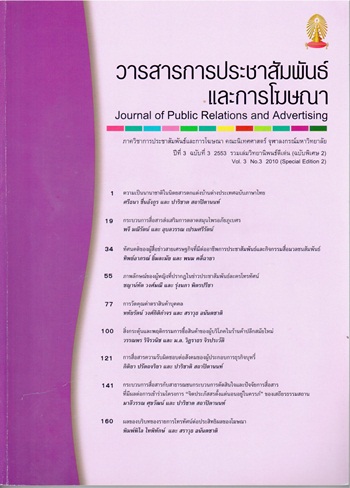กระบวนการสื่อสารกับสาธารณชนกระบวนการตัดสินใจและปัจจัยการสื่อสารที่มีผลต่อการเข้าร่วมโครงการ “จิตประภัสสรตั้งแต่นอนอยู่ในครรภ์” ของเสถียรธรรมสถาน
Main Article Content
Abstract
The purpose of this research is to study the public communication process, decision making process and communication factors of the couples who are members and planning to have their own babies, the mothers who are pregnant, and those who have already given birth, by means of qualitative research implemented by non-participation observation ,media and documentary studies and in-depth interview of 6 staffs and 33 members. The results of the research are as follows: The public communication process of Pregnant Mothers Program consists of 2 objectives which are informing the information and inviting target group to participate in the program. There are 3 main points in the communication: first, the adaptation of Buddhism-science to body and mind; second, Dhamma in daily life; third, the investment of life for their children. The main target groups are the couples who are planning to have their own babies, the mothers who are pregnant, and those who have already given birth.The five secondary target groups are the young who are planning to have babies, people who come to practice Dhamma, visitors, the people involve, and ordinary people. The communication strategies the staffs use are 1. Message strategies that consist of 3 strategies which are truth and rational message, challenge to perform and sharing experience 2. Media strategies that consist of 5 strategies which are words of mouth communication, opportunity of utilizing potential channels, media integration, hospital network, and formal and regular activities. Decision making process that begins from internal factors of parents includes


